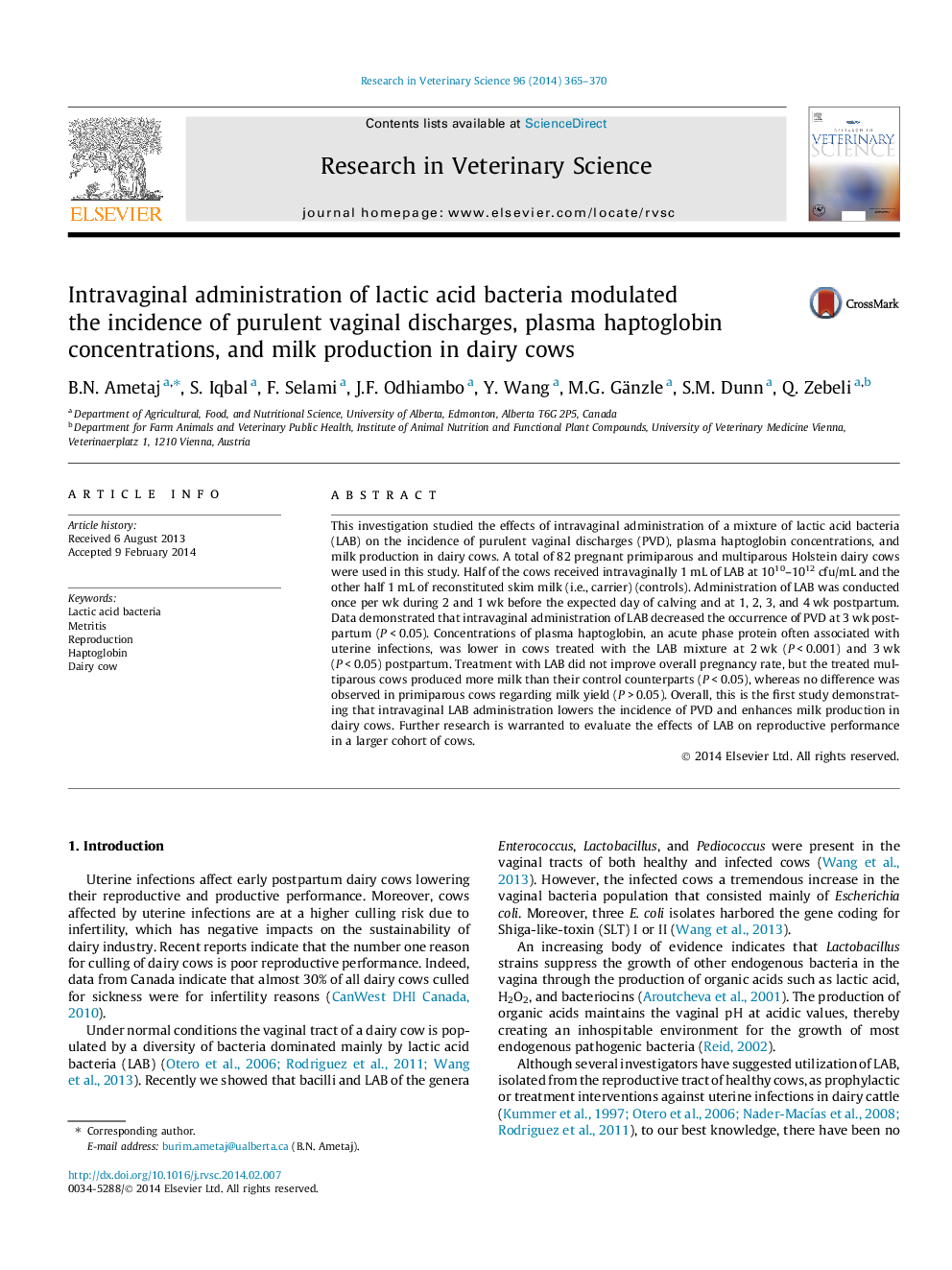| Article ID | Journal | Published Year | Pages | File Type |
|---|---|---|---|---|
| 5794810 | Research in Veterinary Science | 2014 | 6 Pages |
This investigation studied the effects of intravaginal administration of a mixture of lactic acid bacteria (LAB) on the incidence of purulent vaginal discharges (PVD), plasma haptoglobin concentrations, and milk production in dairy cows. A total of 82 pregnant primiparous and multiparous Holstein dairy cows were used in this study. Half of the cows received intravaginally 1Â mL of LAB at 1010-1012Â cfu/mL and the other half 1Â mL of reconstituted skim milk (i.e., carrier) (controls). Administration of LAB was conducted once per wk during 2 and 1Â wk before the expected day of calving and at 1, 2, 3, and 4Â wk postpartum. Data demonstrated that intravaginal administration of LAB decreased the occurrence of PVD at 3Â wk postpartum (PÂ <Â 0.05). Concentrations of plasma haptoglobin, an acute phase protein often associated with uterine infections, was lower in cows treated with the LAB mixture at 2Â wk (PÂ <Â 0.001) and 3Â wk (PÂ <Â 0.05) postpartum. Treatment with LAB did not improve overall pregnancy rate, but the treated multiparous cows produced more milk than their control counterparts (PÂ <Â 0.05), whereas no difference was observed in primiparous cows regarding milk yield (PÂ >Â 0.05). Overall, this is the first study demonstrating that intravaginal LAB administration lowers the incidence of PVD and enhances milk production in dairy cows. Further research is warranted to evaluate the effects of LAB on reproductive performance in a larger cohort of cows.
